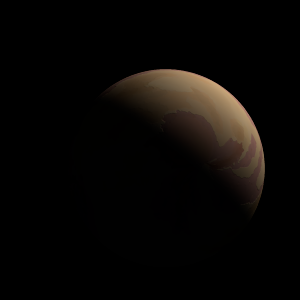|
|
Space Astro
|
Info for exoplanet "Hesahi"
| Scientific (actual) data |
|---|
| Name | Kepler-1677 b |
| Planet status | Confirmed |
| Radius | 0.241 |
| Orbital period | 22.064 |
| Semi major axis | 0.1634 |
| Inclination | 89.95 |
| Discovered | 2020 |
| Updated | 2021-02-05 |
| Tzero tr | 2454980 |
| Impact parameter | 0.195 |
| Temperature (kelvin) | 726 |
| Publication | Announced on a website |
| Detection type | Primary Transit |
| Alternate names | 2MASS J19535839+4700469 b, K01984.01, KIC 10094670 b, KOI-1984 b, KOI-1984.01, WISE J195358.38+470046.9 b |
| Star name | Kepler-1677 |
| Right ascension | 298.49° |
| Declination | 47.01° |
| Mag i | 13.528 |
| Mag j | 12.605 |
| Mag h | 12.373 |
| Mag k | 12.288 |
| Star distance | 751.23 |
| Star metallicity | 0.14 |
| Star mass | 1.195 |
| Star radius | 1.2 |
| Star temperature | 5804.5 |
| Star alternate names | 10094670, 2MASS J19535839+4700469, KIC 10094670, KOI-1984, WISE J195358.38+470046.9 |
| Wikipedia article | Kepler-1677 b |
Back
| |
| Fictional info (?) |
|---|
| Suggested name | Hesahi |
| Planet type | Planet |
| Its north and south poles, therefore, lie where most other planets have their equators. |
| Atmosphere | Oxygen | 55% |
| Sulfur dioxide | 25% |
| Nitric oxide | 15% |
| Hydrogen deuteride (HD) | 2.4% |
| Methane | 2% |
| Carbonyl sulfide | 0.00026% |
| Atmospheric pressure | 0.12 bar |
 |
| No known satellites |
| Google search for Hesahi |
|
Website by Joachim Michaelis
|
|
|
|